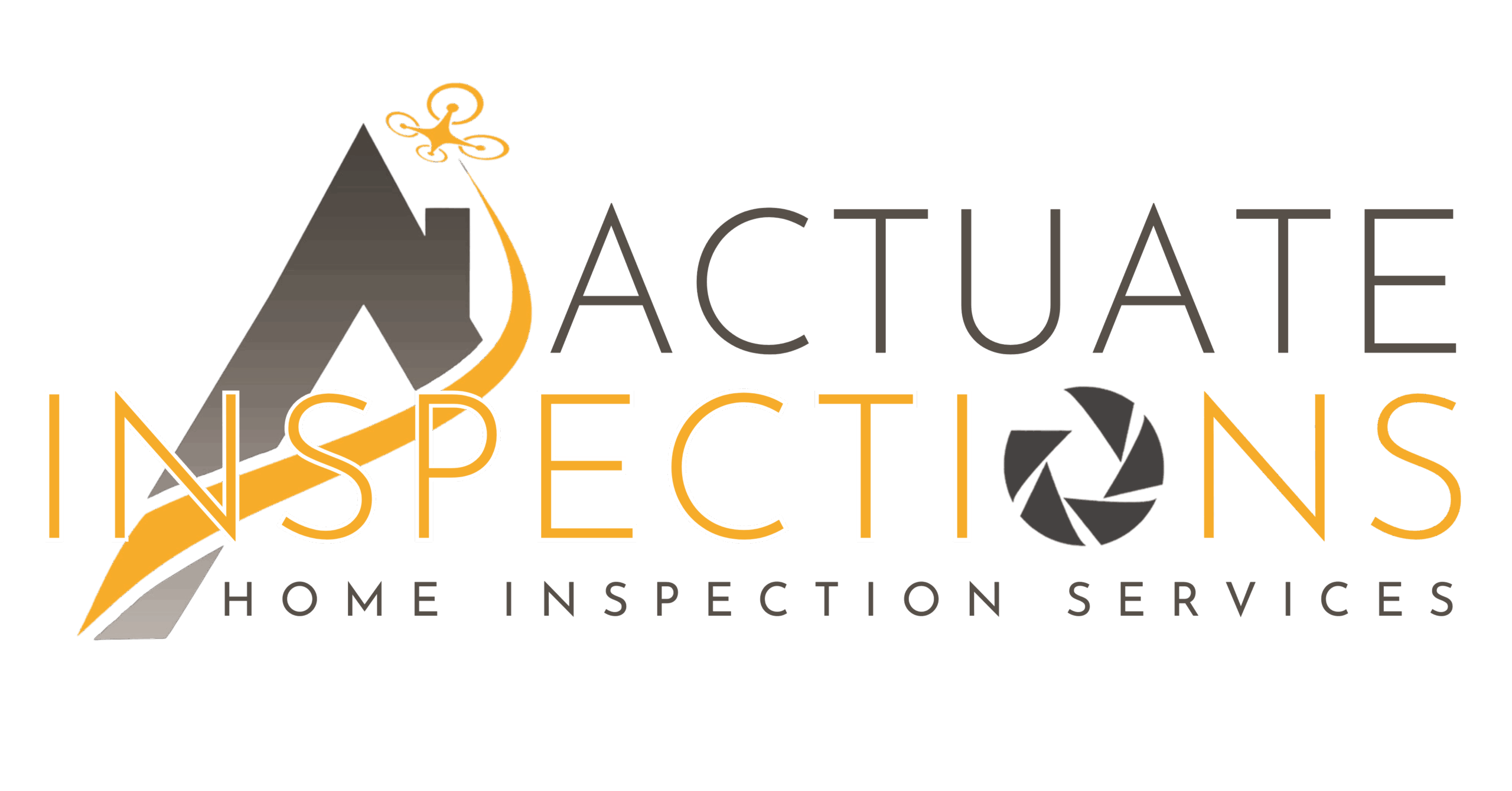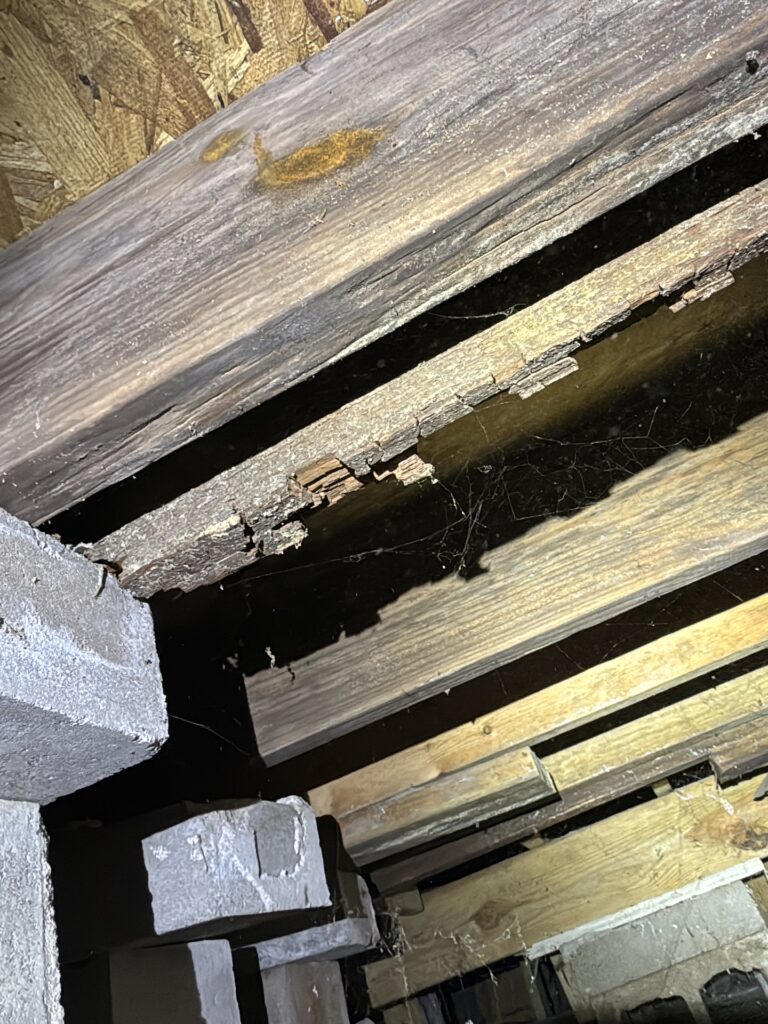If you are shopping for a home, understanding the most common home inspection red flags can save you from expensive surprises. A red flag does not automatically mean walk away. It simply means a condition deserves close attention. Some buyers will walk over something small. Others will push forward through major repairs because it fits their goals. The key is knowing what each red flag actually means and how it affects the long term health of the home.
In this guide, we will cover:
- Old electrical systems such as knob and tube or aluminum wiring
- Problem plumbing materials like polybutylene
- Foundation issues and structural movement
- Floor structure failures and improper repairs
- Sewer line defects including Orangeburg pipe
- Roof and flashing issues that can hide moisture damage
Red Flag 1: Knob and Tube Wiring
If you want sugar coating, skip this section. If you want the truth, knob and tube is one of those things people love to downplay until the repair estimate hits the table.
Knob and tube wiring appears in many older homes built before the 1950s. It is ungrounded and often modified by previous owners over the years. Insurance companies are selective about covering homes with this wiring type. While some knob and tube remains functional, it has limitations. It does not support modern electrical loads and it is more vulnerable when it has been patched or spliced incorrectly. If you see knob and tube noted in a report, the next step is usually an evaluation by a licensed electrician to determine its condition and whether replacement is needed.
For more on this topic, review knob and tube wiring concerns and how insurers evaluate older wiring systems through this guide on how homeowners insurance handles knob and tube and aluminum wiring.

Red Flag 2: Aluminum Branch Wiring
Aluminum wiring doesn’t fail politely. It fails with heat, and pretending it’s fine because the lights still come on is how people end up arguing with their insurance company.
Homes built in the late 1960s through the mid 1970s often contain aluminum branch wiring. Aluminum expands and contracts more than copper. This movement can weaken connections and create a higher risk of overheating. Many insurance providers either require repairs, limit coverage, or increase premiums when aluminum wiring is present because of the elevated fire risk and the history of connection failures.
The presence of aluminum wiring does not mean automatic danger, but it does mean you should plan for an electrician to inspect every connection point. There are approved repair methods, including COPALUM and AlumiConn connectors, but the cost varies based on access and the number of circuits involved. Buyers should also be aware that insurance companies may request verification that these repairs were completed by a qualified professional before extending or renewing coverage.
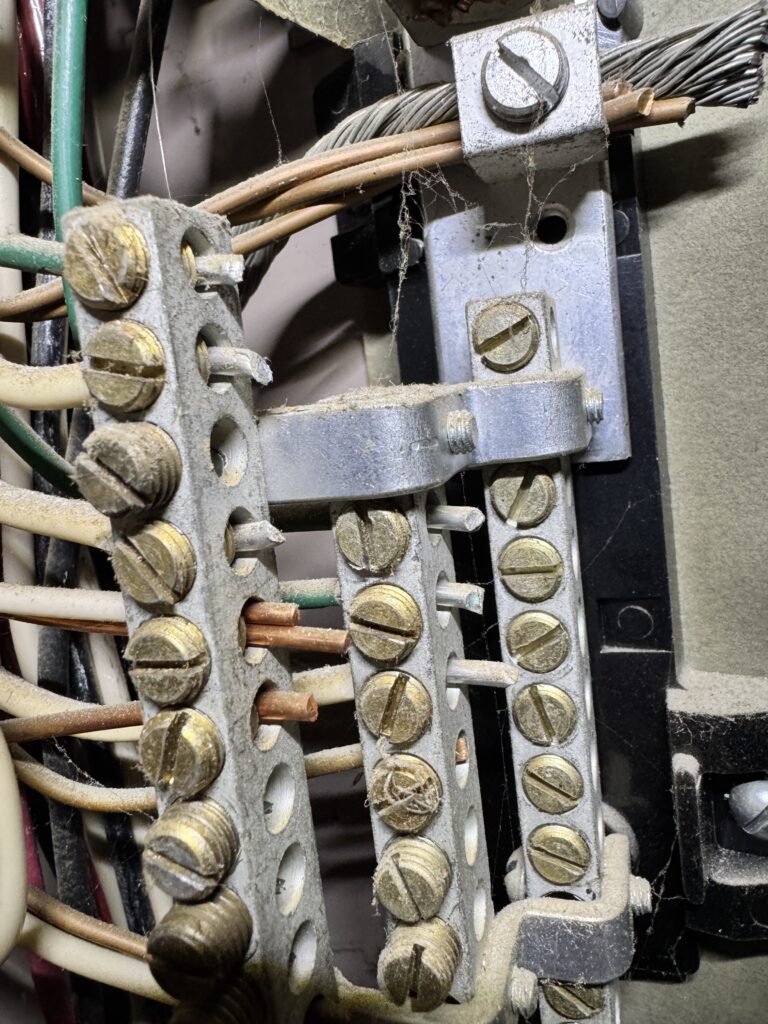
Red Flag 3: Polybutylene Plumbing
Polybutylene loves to fail where you can’t see it. Behind walls. Under floors. Anywhere except somewhere convenient. It’s one of those materials people wish they didn’t have once they actually have it.
Polybutylene plumbing is one of the biggest home inspection red flags found in older subdivisions. It was used from the late 1970s through the mid 1990s. The issue is that polybutylene becomes brittle over time. It also reacts poorly with oxidants in municipal water, which leads to interior deterioration. Failures often occur behind walls or beneath floors, which is why this plumbing material has been associated with large insurance claims.
If you see polybutylene plumbing noted in a report, replacement is the long term solution. Consult with a plumber you know and trust to discuss options, but buyers should definitely factor replacement into future planning.
For additional reference, see StructureTech’s explanation of polybutylene pipe risks and replacement and this breakdown of the hidden dangers of polybutylene piping.
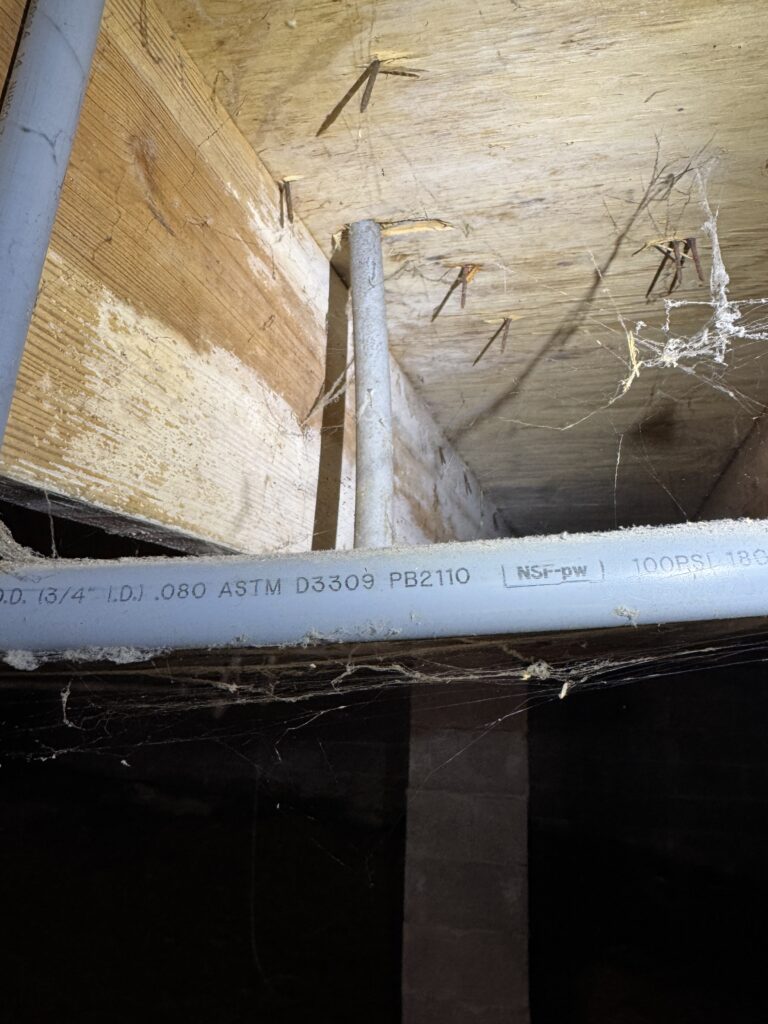
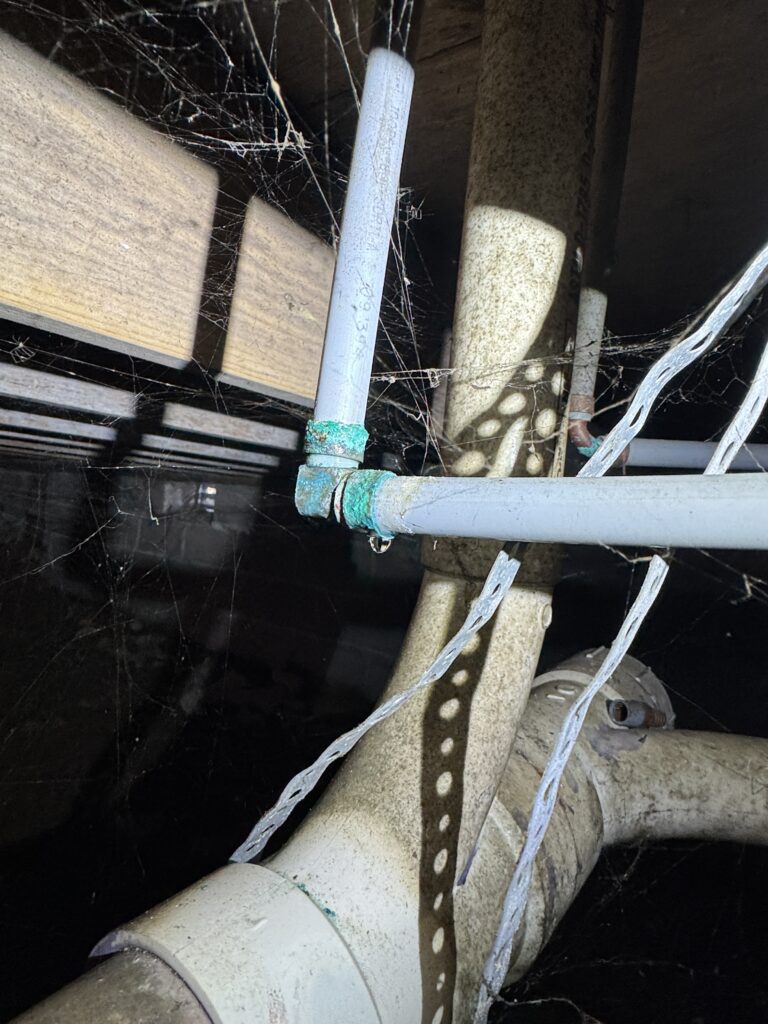
Red Flag 4: Major Foundation Cracking or Structural Movement
You don’t have to panic, but you also don’t get to ignore a crack that’s getting bigger every year. Foundation problems get expensive when people wait, not when they act.
Every home settles some. Small cracks are often normal, and to be expected. The concern comes when settlement turns into legitimate movement. Significant horizontal cracking, bowing, leaning foundation walls, or cracks that widen along the length of the wall deserve attention.
Active water intrusion in basements or crawlspaces often connects directly to foundation movement. Poor drainage, clogged gutters, or improper grading can make the problem worse. Structural issues are repairable, but costs range widely. Some buyers are ready to take that on. Others are not. What matters is bringing in a qualified structural professional so the decision is based on facts rather than fear.
Red Flag 5: Damaged or Improperly Repaired Floor Structure
I’ve seen everything under a house: stacked bricks, bottle jacks, two-by-fours doing things they were never meant to do. If someone “fixed” it with whatever was lying in the yard, it isn’t fixed.
Sagging floors, bouncy rooms, cut joists, rotted beams, and makeshift repairs are more common than most people realize. Many older homes have been modified without permits or built with a mix of old and new materials. Sometimes the structure was never designed to carry the loads added over time.
Any report mention of significant sagging, structural rot, or questionable repairs deserves attention. A floor structure can technically support weight while still being one step away from failure. This is why inspectors look for proper support, beam sizing and configuration, and moisture conditions in crawlspaces and basements.
Red Flag 6: Sewer Line Problems or Orangeburg Pipe
A sewer line can look perfectly innocent from the outside while completely failing underground. This is the kind of repair that makes people cry at closing.
The sewer line is one of the most expensive systems to repair. Most of it is underground and completely hidden. Orangeburg pipe, an old fiber based material used from the 1940s through the 1970s, is known for collapsing. Clay tile lines can shift or crack. Even PVC can settle or separate at joints if the soil shifts.
If an inspector recommends a sewer scope, take it seriously. Root intrusion, bellies in the line, and partial collapses can all create slow drainage and backups. Sewer replacement can run from a few thousand dollars to well into five figures. Knowing the condition upfront helps you decide whether the home makes sense for your budget.
For additional insight into this material, review StructureTech’s overview of what Orangeburg pipe is and why it fails.

Red Flag 7: Roof and Exterior Envelope Problems
Shingles and flashing work as a team. Shingles take the broad impact of weather, but flashing is what keeps water out of every weak spot, joint, and transition. Ignore either one and the whole system fails. Flashing just happens to be the part that fails first and causes the most hidden damage, which is why I pay so much attention to it.
Most people only notice shingles because that is what they can see from the ground, but shingles are not what stop water from sliding behind siding, roof edges, walls, or changes in slope. Flashing does that job. When flashing is missing, bent, buried, installed backwards, or simply never installed at all, water has a direct path into places you cannot see.
And that is when the real problems start: rot, mold, damaged sheathing, structural decay, and interior repairs that show up only after the hidden damage has been quietly spreading for years. A roof can look “fine” from the street while the structure underneath is being destroyed.
Other roof related red flags include:
- Active leaks
- Sagging or uneven roof lines
- Soft or deteriorated decking
- Granule loss or advanced shingle wear
- Poor roof drainage around valleys or transitions
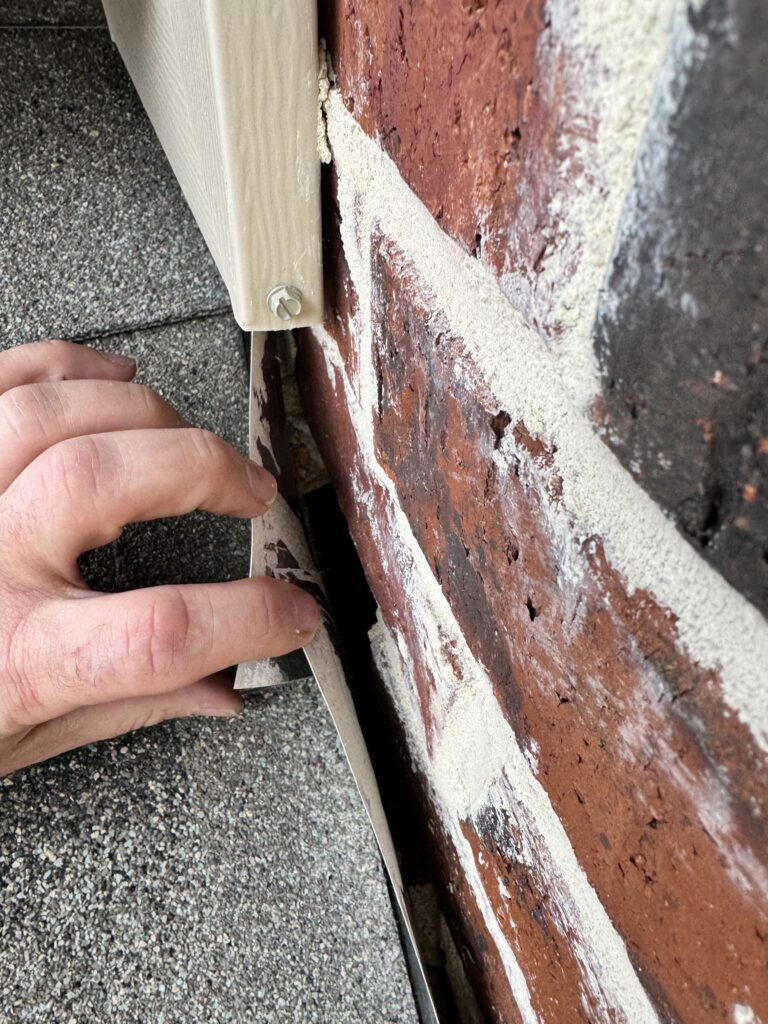

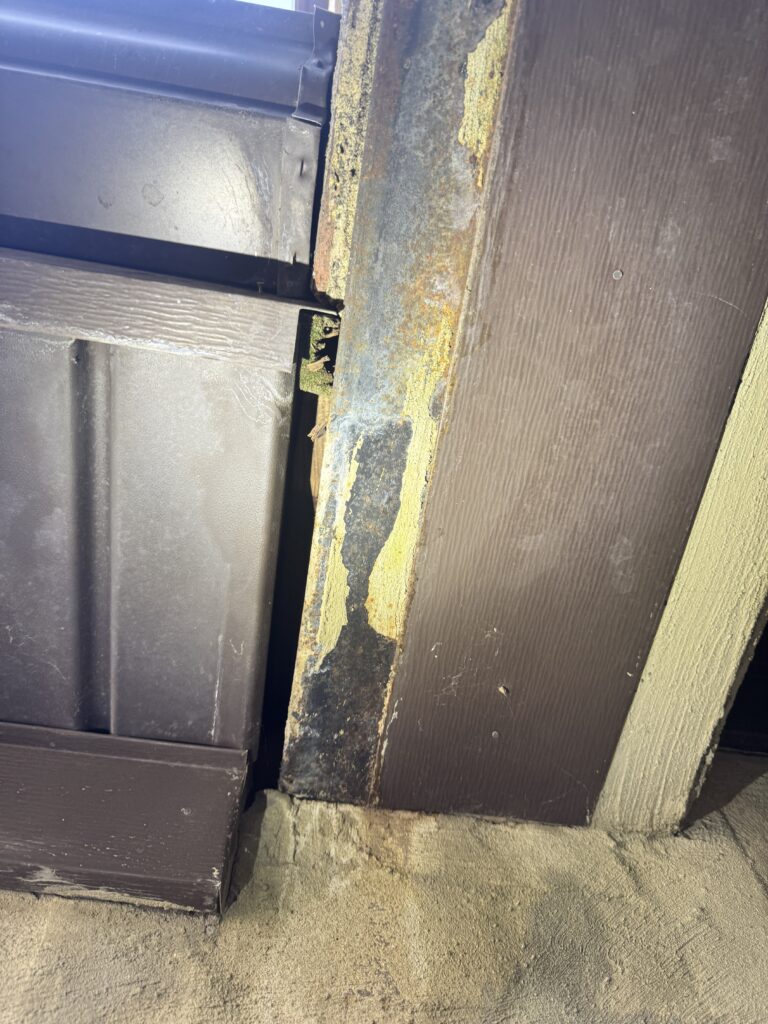
How To Respond To Home Inspection Red Flags
If you want a cheerleader, hire a cheerleader. If you want facts, hire an reputable Certified Master Inspector®. I’m not here to make the deal work or kill it. I’m here to tell the truth so you can make a smart call.
A home inspection is not a pass or fail event. It is an information tool. These home inspection red flags deserve the most attention because they involve safety, cost, or long term damage. Some buyers walk away. Some negotiate repairs. Some move forward because it fits their goals.
But here is the blunt truth. When you run into these kinds of issues, they are not DIY projects and they are not handyman specials. These are licensed-professional problems. Always bring in a third-party, unbiased, qualified expert who is not tied to the transaction and who actually documents what they do. The right pro can confirm the scope, outline repair options, and keep you from inheriting someone else’s shortcuts.
Your job is to decide what works for you. My job is to explain what the red flag means, why it matters, and what your next step should be. To learn more about sewer scopes, crawlspace issues, or roof defects, explore our other inspection articles for deeper breakdowns.
